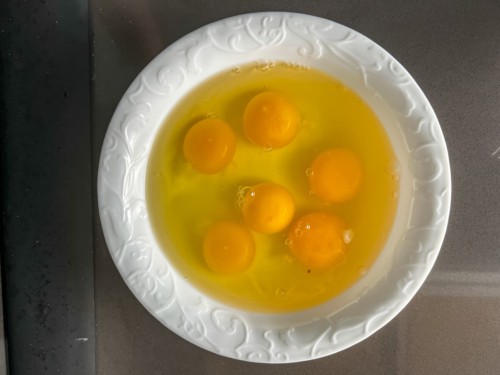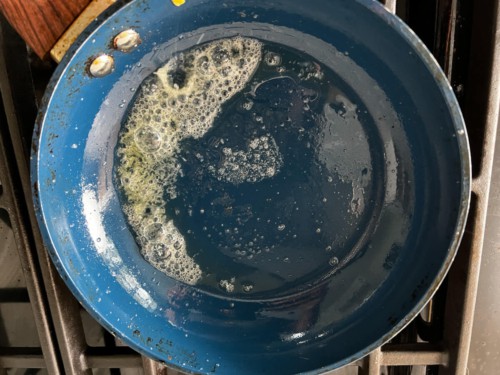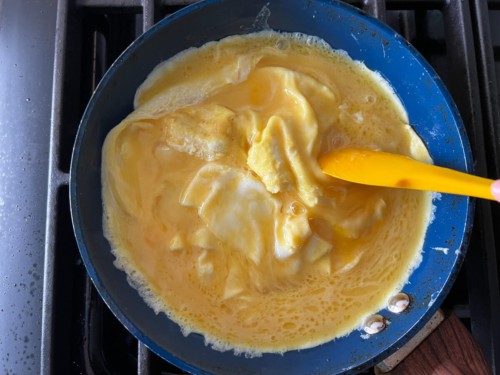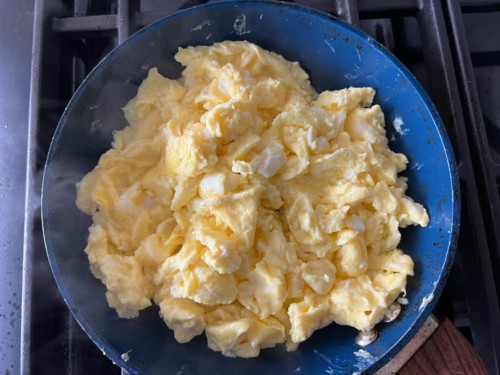How to make fluffy scrambled eggs
Note: This post contains affiliate links. As an Amazon Associate I earn from qualifying purchases.
Soft, fluffy, and perfectly cooked, this easy recipe for scrambled eggs yields melt-in-your-mouth delicious eggs time and time again. Made with simple ingredients, this recipe makes the perfect breakfast, brunch, or breakfast-for-dinner.
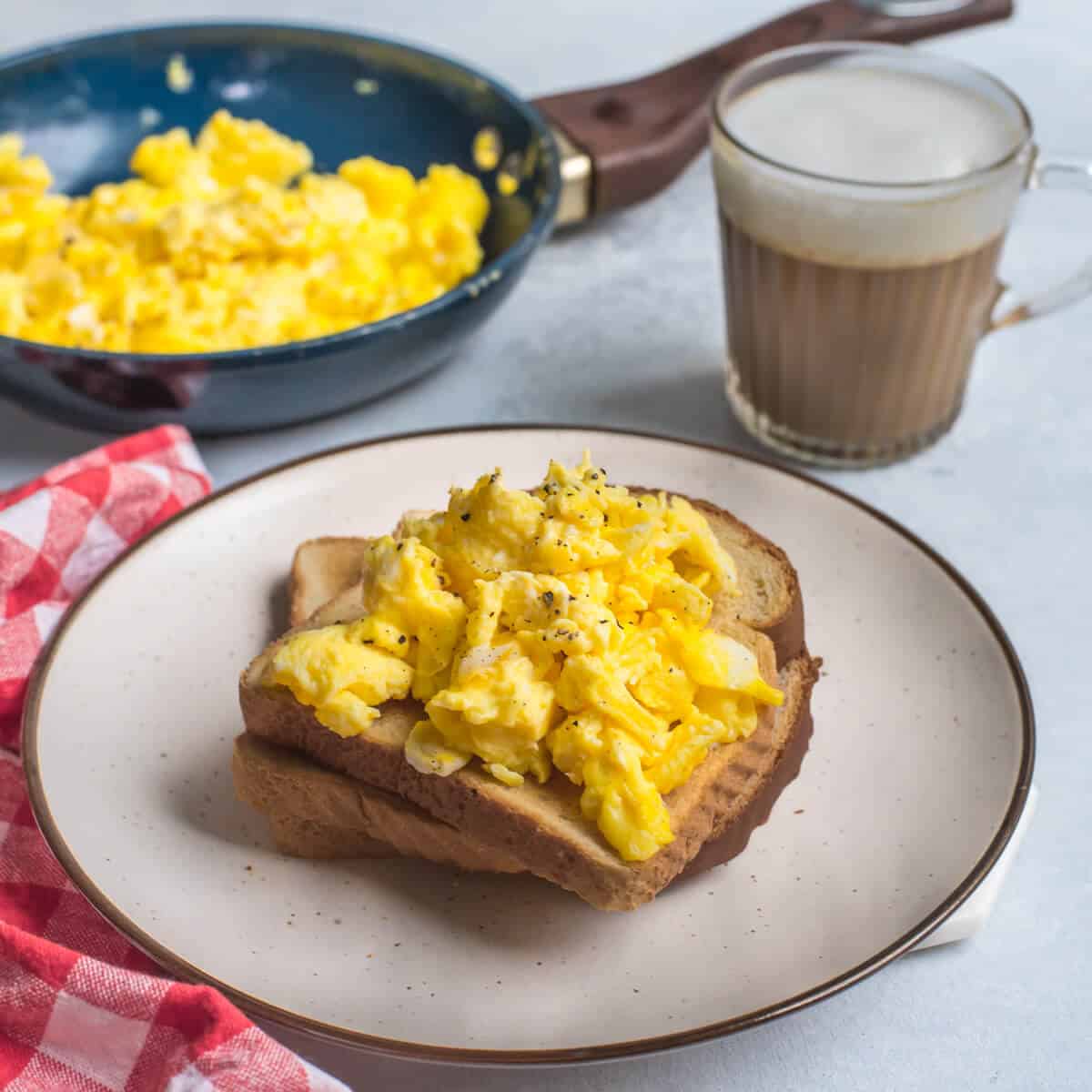
Learning how to create restaurant-style soft, fluffy, and creamy scrambled eggs at home has never been easier. This simple recipe makes for quick morning breakfasts, filling weekend brunches, and simple breakfast-for-dinner options.
Whether you have been making scrambled eggs for years or are just starting out, this easy-to-follow recipe is sure to teach you a few helpful tips and tricks to yield the absolute best scrambled eggs.
Hard vs. soft scrambled eggs
When it comes to making scrambled eggs, there are two main styles of scrambled eggs, hard scrambled and soft scrambled.
Hard scrambled eggs come from cooking your scrambled eggs on medium heat until they are visibly dry. While cooking, you break up the curds and keep the eggs moving to prevent burning or over-cooking. This style of scrambled egg is most common at diners and restaurants.
Soft scrambled eggs take a little more finesse. Typically made by whisking and pre-salting the eggs before adding them to a pan, these eggs also cook with the added element of butter. They cook at a lower temperature and yield a soft, creamy, moist plate of eggs.
Testing eggs for freshness
There are a number of different ways to test your eggs for freshness. First and foremost, check the best-by-date on the packaging. If you have passed the best-by date, it is best to toss the eggs.
Some other ways to test for freshness include the water test, the egg white test, and a good old-fashioned smell test.
To conduct the water test, you will need a bowl, an egg, and enough cold water to cover the egg. Fill the bowl with cold water and place the egg inside. Based on the age of the egg, it will either sink, float, or hover.
- Fresh– A fresh egg will sink to the bottom of the bowl or turn on its side.
- Older but still good– A slightly older egg might hover in the water but not float all the way to the top.
- Not fresh– If the egg floats up to the top of the water, it is no longer safe to use or consume.
The egg white test: Crack an egg into a bowl or on a plate. Look at the egg white. If it appears watery, clear, and runny, the egg is old and should be discarded.
A smell test: You might catch a whiff of a sulfur odor from the egg either before or after cracking it. This is a sign the egg has gone bad and should not be used.
For more information about the science behind these different tests, check out this article from The Spruce Eats about Testing Eggs for Freshness.
Here’s what you need
Ingredient notes/swaps
- Eggs– Be sure to check your eggs for freshness before using them.
- Whole milk– Helps prevent rubbery scrambled eggs.
- Butter or olive oil – Used to grease the pan and keep the eggs from sticking to the sides.
- Salt + Pepper– Boosts the flavor of the eggs. I like to add the salt before cooking the eggs and the pepper after they scramble.
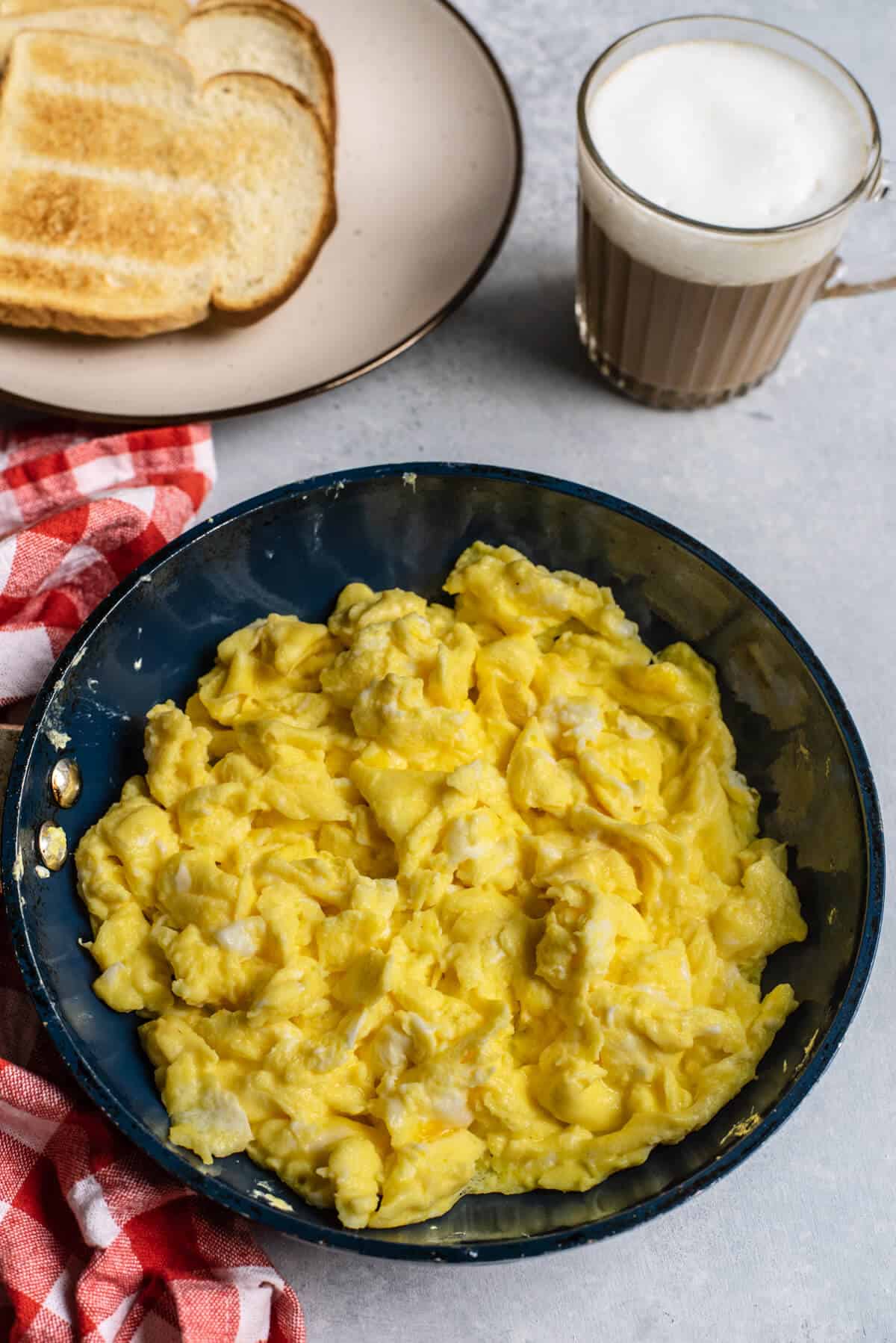
Notes
- Adding salt – You can salt the eggs after cooking as well. I prefer to add before because it seasons it evenly.
- Always add eggs to a hot pan – Make sure the oil/butter is hot before adding the eggs, or the eggs will stick to the pan.
- Don’t use a cast-iron skillet – It will leave a greenish tinge on the eggs.
- Tip for fluffier, soft curds – Whisk the eggs well to incorporate the air, which leads to a fluffier texture and an even yellow color.
- Don’t overcook – Take the pan off the heat when the egg mixture is no longer runny. The eggs will continue to cook in the residual heat.
Variations to try
- Indian scrambled eggs – You can add onions, tomatoes, and cayenne pepper or green chilies to a well-beaten egg mixture, much like this egg bhurji recipe.
- White and yellow scrambled eggs – When you are in a rush, you can add crack eggs directly into the pan. The final eggs won’t be all yellow. Instead, you’ll see distinct bits of cooked yolk and whites.
- Substitute whole milk with heavy cream.
- Chopped fresh herbs and leafy greens – chives, cilantro, thyme, green onions, and leafy greens like spinach make excellent additions. Add them once the eggs are cooked. The spinach will cook and wilt in the residual heat.
- Grated cheese – Add grated cheese of your choice to the eggs once they are done cooking. My favorites are cheddar cheese or goat cheese.
- Chopped bacon, ham, or a dollop of sour cream also make good toppings.
- Seasonings – Other than salt and pepper, you can also experiment with white pepper or hot sauce.
How to prep ahead for scrambled eggs
The best way to prepare in advance to make scrambled eggs is to check your eggs for freshness and pull them out to allow them to come to room temperature.
If you plan to add mix-ins or sides for your scrambled eggs, I would recommend making and preparing those while the eggs come to room temperature.
Storage tips
Cooked, scrambled eggs keep in the refrigerator in an air-tight container for no more than 2 days.

Serve it with
Serving up scrambled eggs couldn’t be easier! Here are a few different sides you might dish out with these eggs:
- Fresh toast
- Avocado toast
- Toasted bagel
- Homemade pancakes
- Wrapped up in a roti/chapati
- A side of bread upma
- Roasted sweet potatoes

Frequently asked questions
Yes, but to a point. A small amount of milk in the eggs ensures the eggs stay fluffy and prevents them from getting too rubbery during the cooking process.
No. For fluffier eggs, I would recommend using room-temperature eggs. When whipped, the room temperature eggs yield a fluffier scrambled egg compared to cold ones.
Salting eggs before cooking ensures an even seasoning throughout the eggs.
Butter helps prevent the eggs from sticking to the pan and also yields lighter and creamier eggs.
The eggs appear thickened and fluffy and are not visibly runny.
Eggs pair well with a variety of ingredients. Some additional mix-ins you might include are shredded cheese, green onion, bell peppers, spinach, mushrooms, tomatoes, and more!
Other egg recipes to try for breakfast

How to cook scrambled eggs
Ingredients
- 6 large eggs
- 6 tablespoons whole milk
- 1 tablespoon melted unsalted butter
- salt to taste
- pepper to taste
Instructions
- Crack the eggs in a medium-sized bowl. Whisk them till yolk and white combine into a pale yellow liquid. Add milk and salt to the eggs and whisk till well combined.

- Add butter to a frying pan kept over medium heat.

- Once the butter melts and starts sizzling, carefully pour the eggs. Don't mix it, yet. Reduce the heat to medium-low.

- Once the edges start to set, use a spatula to push the edges to the center and fold them in. Continue this process throughout the edge of the pan until lumps (or curds) start to form.

- Gently stir to cook any remaining egg mixture and form more lumps. Break the curds to smaller pieces, if desired.
- Turn off the heat while the eggs are still moist but not runny. Serve with ground pepper.

Disclaimer: Approximate nutritional information is provided as a courtesy and can vary depending on the exact ingredients/brands used. If you have health issues, please work with a registered dietician or nutritionist.



